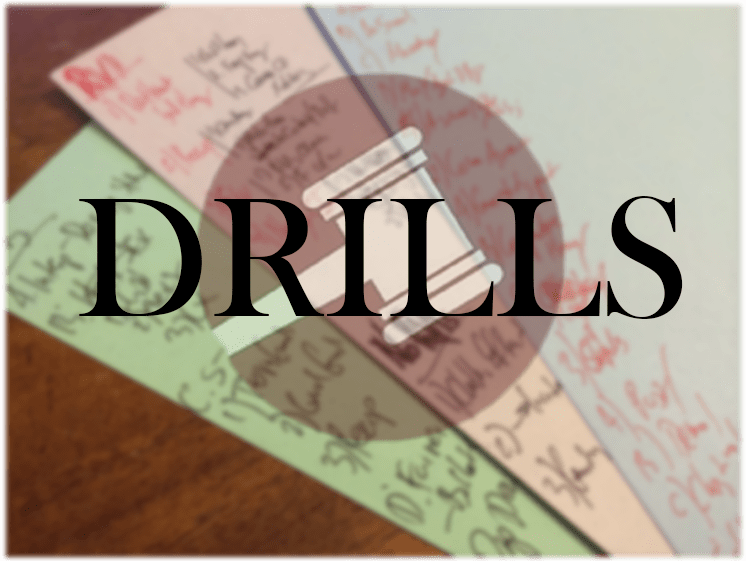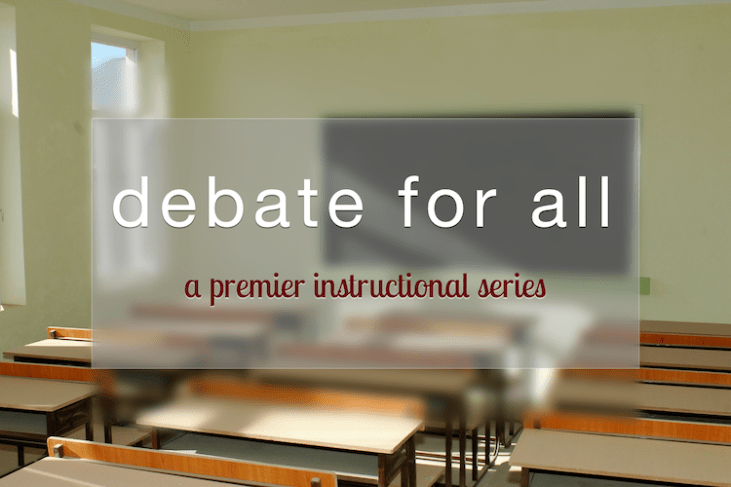Drill of the Week – Going for the Disad

This week’s drill comes from Devansh Chauhan, a 4th year debater at Princeton High School. He has reached elimination rounds at multiple national tournaments and last summer attended Premier Debate’s Invitation-Only summer program. As a coach to other high school students, he’s already coached debaters to elimination rounds at major national tournaments, including one bid round.
Introduction
For this drill, we will be focusing on a util debate centered around the Warming DA, one of the strongest negative positions from last year’s September-October topic on nuclear power. You can download the document here. For more veteran debaters who debated this topic, feel free to scavenge any other Warming DA that you thought was particularly good. You want to make the drill challenging to test your skills.
Assume you are hitting a soft-left structural violence aff (common on the topic) that says nuclear power is bad for workers and for communities where nuclear waste is dumped.
Instructions
Step 1: Flow the DA, while having a teammate spread it. (if you are doing this by yourself, record yourself reading it and then flow it).
Step 2: Take some prep time to think of at least 6 responses to the DA. For beginning debaters, take 1:30. For more advanced debaters, take :45. These answers can take any form, be it uniqueness answers, link turns, impact turns, etc. For this drill, we’re generating analytic responses, so don’t just pull out a block!
Step 3: Give a 1AR against this DA between 1:00 and 2:00. See points of emphasis below for more tips before you reach this step. Remember to record your speeches.
Step 4: Now you’re neg, so take about 2:00 and jot down responses to your 1AR responses. Give a 2NR on this disad for 4:00 (beginner) or 6:00 (advanced). Make multiple responses to each argument, and do as much weighing as you can/.
Step 5: Take :30-1:00 minute of prep and give a 2AR responding to the 2NR collapse. The goal is to try and elaborate on one part of the disad which you think was the most undercovered and to isolate your best pieces of offense.
Step 6: Listen to your recordings and be nitpicky and perfectionist. Practice the speech you had the most trouble with. Sometimes I will redo a speech up to 20 times until I think I’ve made the best arguments in the most efficient way.
Points of Emphasis
- A good 1AR should have multiple ways to beat the disad and weighing. In order to deter a 2NR collapse, the general rule is to not put all your eggs in one basket. Have multiple types of answers such as link turns, thumpers (esp. for politics), uniqueness overwhelms the link, straight turns, impact defense, and impact weighing. Impact comparison can be done on the impact itself or as an overview to the disad.
- Consider an overview to the disad in the 1AR. A lot of debaters nowadays consolidate their answers into one long block, instead of signposting on particular parts of the disad, or give both an overview and line-by-line responses to individual cards. Consolidating some answers into an overview can save time and make sure you get your best responses out first.
- In the 2NR, explain the ‘story’ of the disad during your extension and focus on impact comparison, which is likely how you’ll beat the aff. You might already have weighing/impact comparison if you added it to the 1NC (see the first extension below). Your main goal is to extrapolate your best weighing arguments and sit on the most under-covered ones. A good 2NR structure is: establish your offense by explaining the scenario and extending key arguments, do comparison on the impact and link level between the two positions, respond to their answers, and then make DA turns case arguments (i.e., why global warming would increase waste dumping or otherwise harm marginalized communities).
- Give evidence comparison. This is extremely important in util debates and it’s pretty intuitive to see why. E.g., a peer-reviewed study that accounts for multiple variables is a lot more trustworthy than some random dude writing a blog. Use different factors such as sample size, credentials, recency, etc.
Extensions and Variations
- Impact Comparison in the 1NC. After you are done reading the DA, give impact comparison. Try extempting three or four reasons to prefer your impact (using weighing standards like scope, magnitude, reversibility, time frame and arguments like ‘turns case’). For even more nuance, provide meta-level weighing for why one type of weighing comes first (e.g. magnitude outweighs probability).
- Prep Time Discounts. Give yourself :15-:30 to prepare for each speech.
- String together multiple other DAs (this drill works for everything) and give Hell 1ar’s against them.
- Full Practice Debate. Once you’re more practiced on the util debate, have a full practice debate where you have multiple 1NC options but collapse to the DA in the 2NR. You can replicate this kind of debate on the current topic with a structural violence / oppression aff and any other big stick extinction-level disad.
Questions about this drill or util debates? Comment below!
We are now accepting submissions for instructional drill posts. If you have a basic or advanced drill you’d like to be featured or you want to write/edit for Premier Debate, please contact us!



